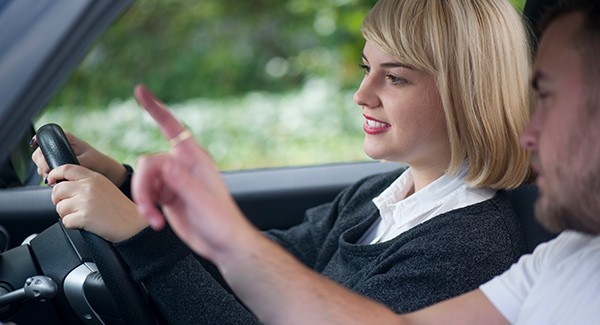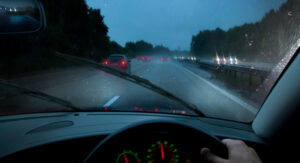First driving lesson: Here’s what to expect
- Editorial Team
It’s natural to feel both nervous and excited about your first driving lesson. Here’s a look at what you can expect from your first lesson and a few things you can do to ensure you’re suitably prepared.

How can I stop feeling nervous for my first driving lesson?
It’s perfectly normal to feel nervous about your first driving lesson. As you become more comfortable with the vehicle and the controls, you’ll feel less nervous about driving.
Sleep is essential for our health and wellbeing, so ensure you get plenty of sleep the night before your first driving lesson. Try to aim for between 7 to 8 hours of sleep if possible.
Breathing exercises, which can be performed standing up or sitting down, can also help. Breathe slowly in through your nose and then exhale for the same amount of time. Repeat this exercise for around three to five minutes.
While they may seem like a good way to calm your nerves, taking herbal remedies may impair your ability to drive safely or process instructions, so they should be avoided.
Do I need my own insurance?
If you’re learning to drive with a qualified instructor, they will already have an insurance policy in place on the vehicle you’re practising in, so you don’t need to worry about insurance.
However, you may want to consider extra practice outside of your lessons with a friend or family member. In this case, you will need to ensure you are covered to drive the vehicle you’re practising in.
Learner driver insurance provides short-term cover on someone else’s car. It is a separate motor insurance policy, where the car owner’s No Claims Bonus is not affected if you make a claim.
Alternatively, if you prefer to practice in your own vehicle, find out more about our learner insurance in your own car.
How to prepare for the first driving lesson?
The Highway Code is essential reading for all road users. Reading up on The Highway Code will prepare you for your theory test and help you drive safely and responsibly.
Your driving instructor will ask to see your provisional licence. Have this to hand, as without it, you can’t legally learn to drive. If you haven’t applied for your provisional licence, here’s what you need to do.
Remember to bring your glasses or wear your contact lenses if you need them, as you won’t be able to drive without them.
Take a bottle of water with you in case you get thirsty. Your first lesson will likely to last a couple of hours, so it helps to stay hydrated.
Don’t be late. You will use up valuable lesson time that you have paid for, and you don’t want the relationship with your instructor to get off to a bad start. Avoid alcohol the night before your driving lesson. If you’ve been out drinking, you may still be affected by alcohol the following day. Alcohol can make you feel drowsy and impair your ability to drive. Furthermore, you could still be above the legal limit when you get behind the wheel.
Also, avoid caffeine-based drinks such as tea, coffee, and energy drinks as these can affect your alertness, concentration and anxiety levels.
Don’t drive on an empty stomach. Slow release -energy foods such as fresh fruit and porridge can help maintain your concentration throughout your lesson.
What to wear to your first driving lesson?
Make sure you dress appropriately for your driving lesson. Your first lesson may last up to two hours, so wear comfortable clothing and avoid anything restrictive.
Make sure baggy clothing such as long sleeves or trousers does not interfere with your driving.
You should also ensure you wear comfortable, suitable, and secure footwear to operate the pedals effectively.
What to expect on your first driving lesson
Your first driving lesson will typically last about two hours. This gives you time to learn the basic controls of the vehicle you will be practising in and hopefully begin driving.
Before learning to drive, you must meet the minimum eyesight requirement. Your instructor will ask you to read a number plate from a distance of 20.5 metres.
Typically, you will be taken somewhere quiet for your first driving lesson. Your instructor will drive you to the destination and provide a running commentary on how they drive, such as when they change gears, use mirrors, and indicate. Once you reach your destination, its time to swap seats and get behind the wheel.
The Cockpit drill is typically one of the first exercises you will go through during your first lesson. Sometimes referred to as DSSSM routine, the cockpit drill consists of checking the vehicle’s doors, seat, steering, seatbelt, and mirrors.
Doors – Ensuring all doors are closed and secured before starting the engine.
Seat and steering – Adjust your seating so that you have a clear view of the road and can comfortably reach the vehicle’s controls.
Seatbelt – Ensure that all occupants of the vehicle are wearing seatbelts.
Mirrors – Adjust your mirrors to an appropriate angle.
You’ll be given a run through of the vehicle’s controls, such as the clutch, brake, accelerator, gearstick, handbrake, and steering wheel.
You may also learn the mirror, signal, and manoeuvre routine, which should be performed before you move off, turn left or right, overtake, change lanes, slow down, or stop.
You will also cover blind spots, the areas you cannot see in the mirrors.
Clutch control – If you’re learning to drive in a manual car, you will cover clutch control. You will discuss how the clutch works and how to find the biting point which is known as the ‘Bite Point’ between the clutch and accelerator.
Moving off and stopping – You will typically cover moving off and stopping on your first driving lesson. You will practice this exercise several times, starting in 1st gear and potentially moving up the gears depending on how comfortable you are with the controls and increasing your speed.
At the end of the lesson, your instructor will take you home or drop you off at your preferred destination. You will reflect on what’s been covered so far, and assuming everything went as planned, what to expect from your next lesson. There will also be an opportunity to ask the instructor questions and address any early concerns.
Is it normal to make mistakes on driving lessons?
Learning to drive can be a daunting prospect for many learners, after all driving can seem difficult. You have to master the controls of the vehicle whilst being alert to everything that’s going on around you.
It’s perfectly normal to make mistakes on your driving lessons. Fortunately, you will be supervised by a qualified driving instructor who has seen it all before and will be there to help guide you through the process.
The instructor will ease you in gently to driving, starting with quieter routes and then building up to more challenging conditions as you gain more experience.
Making mistakes is part of the learning process. While driving may seem difficult initially, you’ll soon become familiar with the controls and how the car drives.
Rest assured, a professional instructor with also have dual controls on the vehicle so they can intervene if necessary.
Don’t worry if you forget things along the way. Driving may seem difficult at first, but with a bit of practice, you’ll soon pick things up, and driving will start to feel more natural.
Don’t be afraid to ask your driving instructor questions
Don’t be afraid or embarrassed to ask your driving instructor questions. Most driving instructors have a wealth of experience, so it’s important to draw on their valuable knowledge to help guide you through the process and give you the necessary reassurances.
Your driving instructor will teach you the best driving practices and how to be safe on the roads.
Final thoughts
When you complete your first driving lesson, pat yourself on the back and look forward to the next. With a little hard work and dedication, it won’t be long before you’re ready for your driving test.
Learn more
Share this article
Table of Contents
More posts

Understanding Road Crossings, Puffin, Pelican & Zebra | A Choice

A Guide On How To Tax A Car | A Choice

Do Black Boxes Have Nighttime Driving Restrictions?
